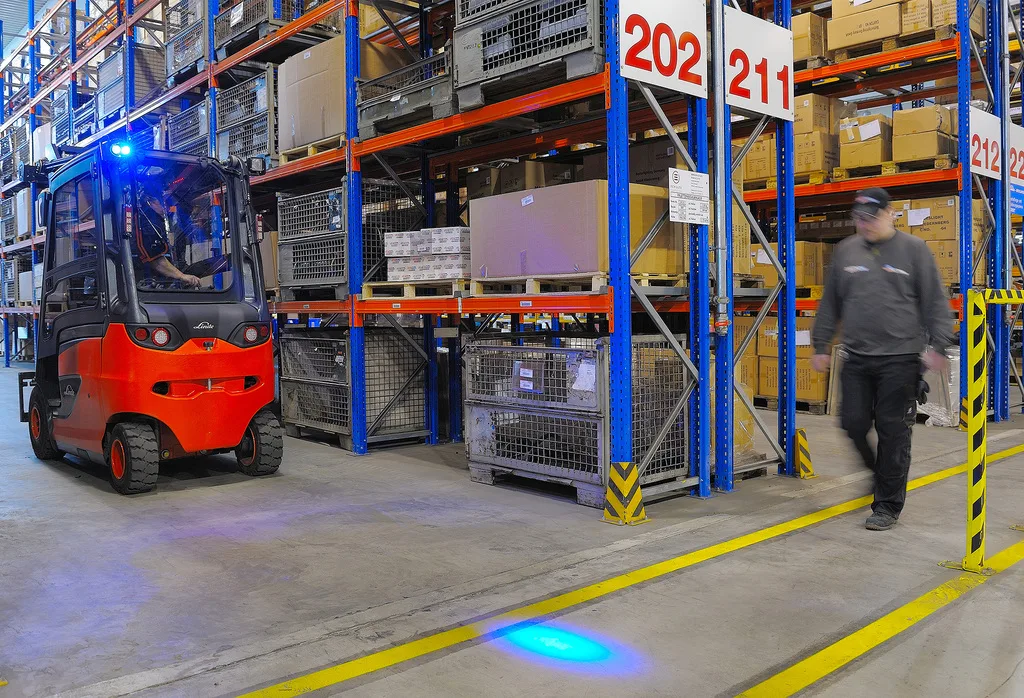Maintaining safety standards
Allison Tucker, counterbalance product manager at Linde Materials Handling has provided information on how to maintain safety standards in warehouses.

“The Institute of Occupational Safety states that 70%
accidents involving forklift trucks are essentially unavoidable,” Allison writes. “With pressures on
businesses in every sector to meet increasingly tight deadlines, it can
sometimes mean that certain safety practices are compromised as a result.
Operators may drive faster, become less cautious with stock and be less likely
to adhere to usual safety standards in pursuit of getting the job done quickly
and delivered on time.
“As a result, human error can often account for accidents at
work, causing serious injury along with damage to both loading and operating
equipment; and resulting in unwanted disruptions to warehouse operations.
“Driving forklift
trucks and working in a warehouse environment carry a certain amount of risk
and it’s vital that employees are adequately trained to be aware that safety is
always the number one priority, and supported by their employers in making that
the case.
“The Health and Safety Executive sets out clear guidelines
for safety in the workplace and specifies in its Approved Code of Practice and
Guidance (L117) that employers must ensure that staff who use, supervise or
manage work equipment must have had enough training to recognise safe and
unsafe practices and know how to avoid risks.
“Accredited training is the most effective way to ensure
proper safety practice in the workplace. A well trained workforce can make all
the difference.
“Improving safety in the warehouse improves overall
profitability. Investment in ongoing staff training should not be seen as a
cost burden. In fact, better practice reduces costs.
“Safer operations can result in savings on fuel bills,
replacement parts, maintenance on wear and tear and in the long term, even
insurance premiums.
“Investing in the right sort of trucks to suit the
application is essential and Linde has developed a number of unique devices to
help its customers adhere to the highest possible standards of safety across
all its product range.
“The Linde Safety Pilot is an innovative device that is
designed to help ensure that operators are not putting themselves in danger
through lifting heavy loads at height. The device works by preventing the load
lifted on the fork arm from exceeding the approved load capacity.
“It does this by calculating the load centre of gravity and
displaying the load weight correctly placed on the fork arms, the current lift
height, the tilt angle of the fork arms and the maximum lift height up to which
the load may be raised on a display screen at the operator’s eye level.
“The system lets off a visual and acoustic warning if the
load is in the verge of exceeding its limits and will actively intervene and
regulate the truck functions to correct operating errors.
“As warehouses are increasingly being designed to maximise
floor to ceiling space, it is common for operators to be operating at heights
of about 6 metres. The Linde Safety Pilot will ensure operators can operate
their trucks in a safe and productive manner, minimising the risk of accidents.
“Auto engine cut-out switches the engine off when the truck
is parked and inactive for a set time, and Linde trucks come with seatbelt
interlocks which mean that the truck will not operate unless it is properly
fastened.
“Linde’s auto-reverse speed reduction aid reduces the
operator’s speed to 1km per hour which reduces the risk of collisions when
reversing. At an agreed point, the speed reduction through the transmission is
activated and the system produces audible and visual warnings to surrounding
pedestrians.
“Linde is proud to have pioneered the hydrostatic drive
system which is now a standard feature across all our engine trucks and while
the technology can be replicated, Linde’s 50 years’ experience cannot. It
offers a transmission that is exceptionally responsive and precise, providing
safer and more effective braking for optimum safety and comfort.
“The hydrostatic drive brakes the truck by slowing and
stopping the flow of oil. Braking performance remains consistent throughout the
truck’s lifetime. If the operator forgets to apply the handbrake on a slope,
the truck will automatically slow down.
“It’s not just forklift truck operators who are at risk at
work, it’s pedestrians in and around the warehouse environment too. Therefore,
it’s essential that safety training is extended to all staff who may come into
close contact with trucks.
“Linde’s Bluespot is a visual driving path warning device
which enhances pedestrian safety in truck aisles and intersections. Bluespot
consists of two energy-efficient, very bright LED lights attached to the truck
which project a large blue spot onto the floor a few metres in front of the
truck’s direction of travel, acting as a warning to pedestrians who may be
approaching.
“Vibrations are known to cause operator fatigue and
therefore reduced concentration. Linde’s trucks are designed to isolate the
operator workstation from the chassis to minimise vibration and on the
counterbalance trucks, a unique overhead tilt cylinder design ensure that
vibrations are dispersed evenly over the whole of the truck.
“When it comes to safety, Linde Materials Handling is at the
forefront of the industry. Not only has Linde won awards for its innovative
safety features, there is also a focus on developing in these areas in
collaboration with our customers in each sector to minimise risk to their
staff, equipment and stock and further improve their business.
“There’s no doubt about it. Installing proper safe standards
and practices pays off.”
HSM publishes a weekly eNewsletter, delivering a carefully chosen selection of the latest stories straight to your inbox.
Subscribe here


